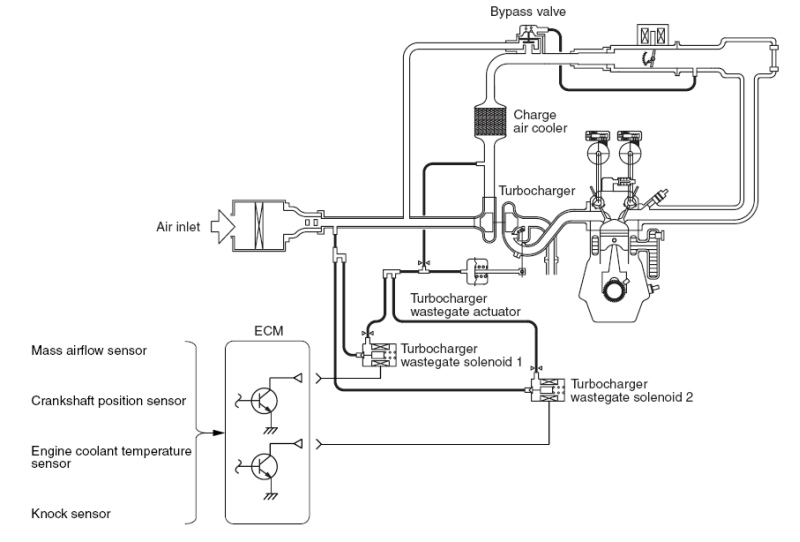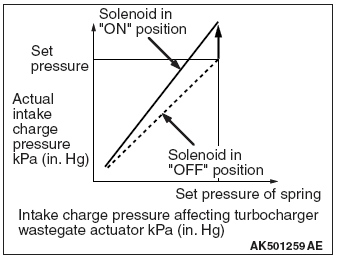RRE's EVO X Dual Boost Solenoid Info
The turbocharger wastegate solenoid operates under duty cycle control in order to control the intake charge pressure that acts on the turbocharger wastegate actuator. This results in a intake charge pressure that suits the driving conditions of the engine.

The ECM turns the power transistor in the unit ON, causing the turbocharger wastegate solenoid to fully open. This causes a portion of the intake charge pressure acting on the turbocharger wastegate actuator to leak. Thus, unless the intake charge pressure rises above the set pressure of the turbocharger wastegate actuator spring, the turbocharger wastegate regulating valve will not open. On the other hand, when the turbocharger wastegate solenoid is fully closed, there is no leakage of intake charge pressure. Therefore, when the intake charge pressure rises to the set pressure of the turbocharger wastegate actuator spring, the turbocharger wastegate regulating valve will open.

Thus, by operating the turbocharger wastegate solenoid under duty cycle control, the ECM is able to control the intake charge pressure within a duty cycle range of 0% to 100%. The ECM actuates the turbocharger wastegate solenoid 1 at a duty cycle rate that suits the engine speed and throttle valve opening angle, and actuates the turbocharger wastegate solenoid 2 at a duty cycle rate that suits the engine speed. By operating a combination of two turbocharger wastegate solenoid, the ECM is able to control a wide range of intake charge pressure.

Contact Road///Race Engineering
13022 La Dana Ct. Santa Fe Springs, Ca. 90670 Tel (562) 777-1522 Fax (562) 777-1562Last updated 12/07mw
